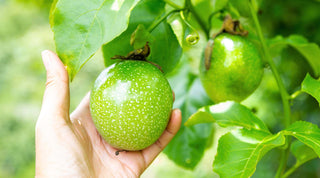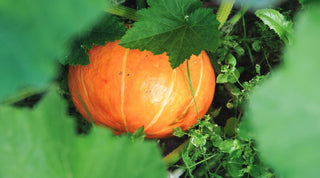Knowing when and how to cut garlic scapes is essential for maximizing your harvest and enjoying the unique flavor they bring to your kitchen.
Garlic scapes are the flower stalks that grow from the bulbs of hardneck garlic varieties. They are not only a delightful culinary treat but also play a crucial role in ensuring the health and productivity of your garlic crop. In this blog post, we'll guide you through the best practices for cutting garlic scapes and explain the benefits of doing so.
Understanding Garlic Scapes
Garlic scapes are the curly, green shoots that emerge from the tops of hardneck garlic plants in late spring to early summer. These scapes will eventually form a flower and produce seeds if left on the plant. However, allowing scapes to mature can divert energy from the garlic bulb, leading to smaller bulbs at harvest time. By cutting the scapes, you help redirect the plant's energy back into bulb development, resulting in larger and more robust garlic bulbs.
When to Cut Garlic Scapes
Timing is critical when it comes to cutting garlic scapes. The best time to cut them is when they are still young and tender, typically when they have made one to two full loops or curls. This usually occurs about three to four weeks after the scapes first emerge, around late spring to early summer, depending on your local climate and garlic variety.
Signs It's Time to Cut Scapes:
- The scapes have formed one to two full curls.
- They are about 10-12 inches long.
- The scapes feel tender but firm when touched.
How to Cut Garlic Scapes
-
Tools Needed: Use a clean, sharp pair of scissors or garden shears to cut the scapes. Sterilizing your tools before use can help prevent the spread of diseases.
-
Identify the Right Spot: Locate the point where the scape emerges from the center of the garlic plant. This is typically just above the topmost leaves.
-
Cutting the Scape: Cut the scape about half an inch above the top leaves of the plant. Make a clean cut to avoid damaging the main plant. If the scapes are particularly long, you can cut them into smaller sections for easier handling and use.
- Post-Cutting Care: After cutting, ensure the garlic plants continue to receive consistent watering and are mulched to retain soil moisture and suppress weeds. This will support bulb development as the plants redirect their energy from scape production to bulb growth.
Benefits of Cutting Garlic Scapes
-
Larger Bulbs: By removing the scapes, you allow the plant to focus its energy on developing larger garlic bulbs. This can significantly improve your overall garlic yield.
-
Culinary Uses: Garlic scapes are a versatile ingredient in the kitchen. They have a milder garlic flavor and can be used in various dishes. Scapes can be sautéed, grilled, pickled, or blended into pestos and sauces.
-
Pest and Disease Management: Cutting scapes can help improve air circulation around the garlic plants, reducing the risk of fungal diseases and pest infestations.
- Aesthetic Appeal: Removing scapes keeps your garlic bed looking neat and tidy, allowing other plants to shine without the distraction of tall, curly stalks.
Using Garlic Scapes in the Kitchen
Garlic scapes are a culinary gem that can add a unique flavor to many dishes. Here are a few ideas for using them:
- Pesto: Blend garlic scapes with olive oil, nuts, Parmesan cheese, and a squeeze of lemon for a fresh, garlicky pesto.
- Sautéed: Sauté scapes in olive oil with a pinch of salt and pepper for a simple side dish.
- Pickled: Pickle the scapes for a tangy addition to salads, sandwiches, or charcuterie boards.
- Grilled: Toss scapes in olive oil and grill them until tender and slightly charred, then serve as a side dish.
Conclusion
Cutting garlic scapes at the right time and in the correct manner is a simple yet effective way to boost your garlic harvest and enjoy a delicious seasonal treat. By understanding the growth cycle of garlic and the benefits of removing scapes, you can enhance both the productivity and culinary possibilities of your garden. Happy gardening and bon appétit!



